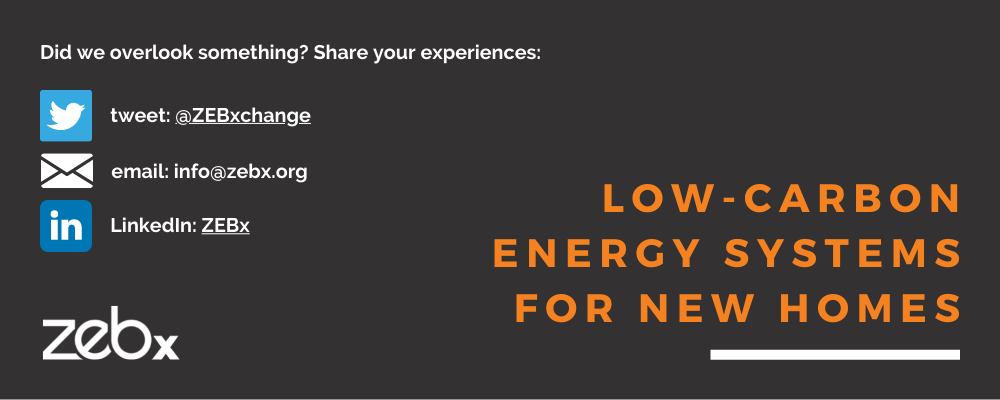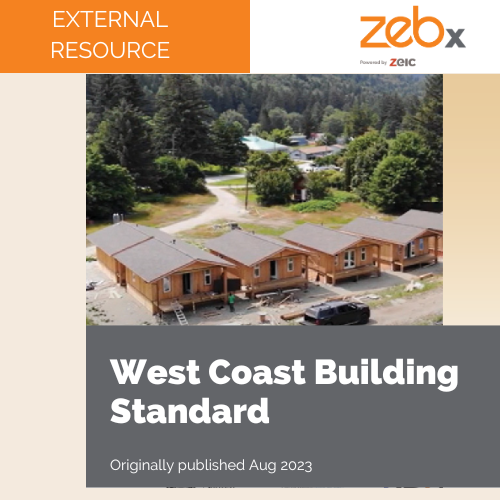
Listen to ZEBx on Spotify, Apple and Google Podcasts!
June 14, 2022
Jun 2022 Decarb Lunch Podcast: Vancouver’s New Green Building Regulations
June 24, 2022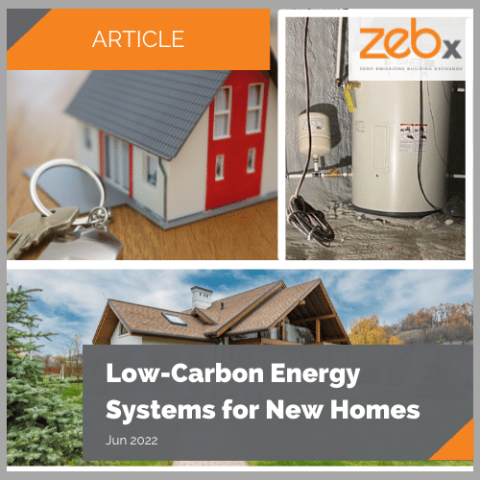

Jun 2022
A low-carbon energy system (LCES) provides all space heating (and cooling) or all domestic hot water heating by using a source of low-carbon energy like BC Hydro electricity. In essence, it’s a system centered on equipment that generates heat by using either an electric resistance or something magical called a vapour-compression refrigeration cycle.
Well, maybe it’s magical only for people without a mechanical engineering degree.
Equipment that uses electric resistance to heat include electric baseboard heaters, inline duct heaters, and electric hot water tanks – some of the least expensive heating equipment on the market and in widespread use for many decades. A superior alternative to electric resistance heating is a heat pump, which uses a refrigerant to move thermal energy from one area to another. Depending on the direction of the heat transfer, the heat pump can either heat or cool a home. If you want to learn more about heat pumps, check out this wealth of information from Bring It Home 4 The Climate.
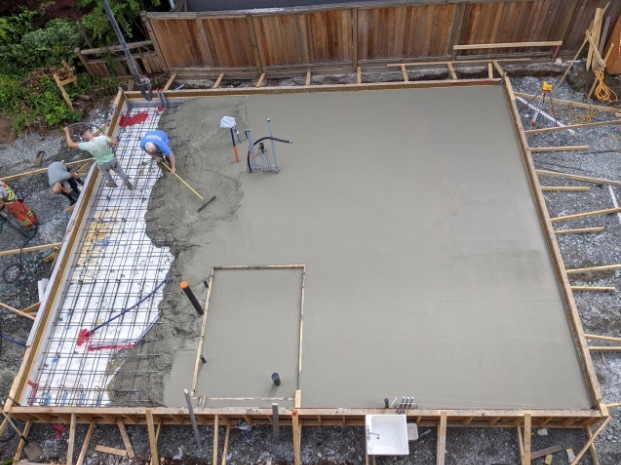
What’s important to note is that although both types of equipment are considered low-carbon ways of generating heat, the best you can expect out of electric resistance heating is an efficiency (coefficient of performance) of 100%. Although better than a gas-fired furnace or gas-fired water heater, it’s not as good as a heat pump, which can have efficiencies of up to 400%.
How can one unit of electrical energy produce four units of heat energy? That’s the magic of a vapour compression refrigeration cycle. Of course, the coefficient of performance (CoP) depends on factors such as the difference between the outdoor temperature and the desired indoor temperature, the refrigerant, the efficiency and age of the equipment, the quality of the heat pump and installation, and a variety of other factors.
The Gateway to Zero-Emissions Buildings in BC
The CleanBC Roadmap to 2030, launched in October 2021, includes actions across several pathways, including low-carbon energy, to accelerate B.C.’s transition to a net-zero future and ensure we meet the Province’s legislated GHG target of 40% (below 2007 levels) by 2030.
These actions include a goal to make all new buildings net-zero (operational) emissions by 2030 and to ensure that all new space and water heating equipment sold and installed in B.C. will be at least 100% efficient, significantly reducing emissions compared to current combustion technology. Another important goal in the roadmap is the implementation of a GHG emissions cap of 6 Mt CO2e for gas utilities, starting in 2030.
The Metro Vancouver Regional District, a federation of 21 municipalities, one Electoral Area, and one Treaty First Nation, is in alignment with the Province. It has established the same goal for new buildings and a decarbonization goal for existing buildings. Their Climate 2050 Roadmap for Buildings includes a target to eliminate operational emissions from new buildings by 2030 and from all (new and existing) buildings by 2050. The Roadmap proposes establishing GHG performance requirements for homes as early as 2024.
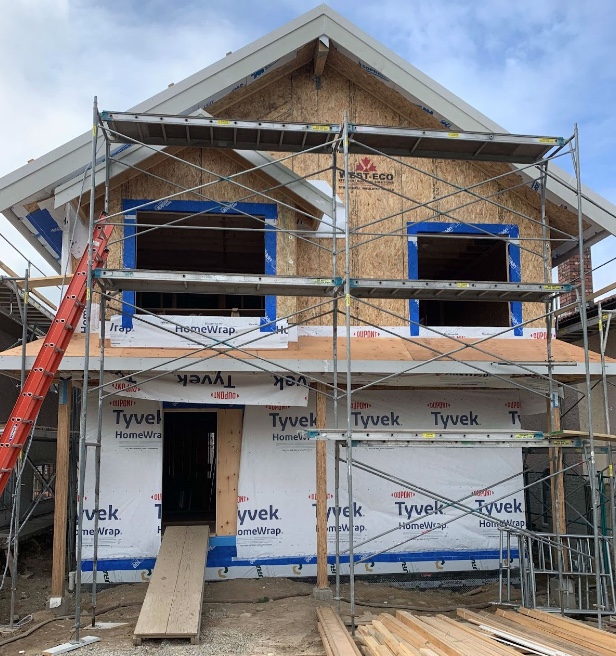
In some municipalities, LCESs are already required. In 2021, the North and West Vancouver municipalities changed the minimum performance requirements for new homes to either meet the highest level (Step 5) of the B.C. Energy Step Code (ESC), or Step 3 of the ESC if using a LCES – essentially a relaxation of the minimum requirement on the condition that electricity be used to heat the home and generate hot water. Beginning on January 1, 2022, two of the City of Vancouver’s three compliance pathways for new homes require LCESs.
By The Numbers
For a mechanical system to qualify as low-carbon in North and West Vancouver, the system must have the following characteristics:
- system seasonal average coefficient of performance greater than two;
- modeled GHG intensity of no more than 3 kg CO2e/m2·yr; and
- any gas-fired peak demand heating equipment is appropriately sized to augment the primary low-carbon system under peak demand conditions (not full redundancy).
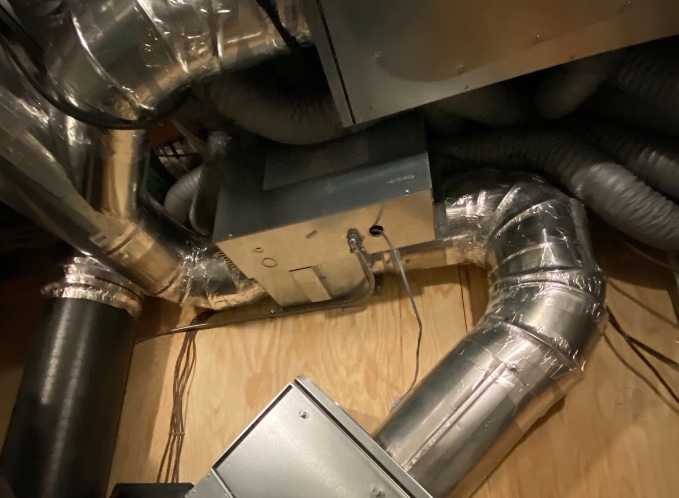
The City of Vancouver also requires most new homes to install LCESs. It offers three compliance paths for new homes. The prescriptive path spells out that no gas-fired appliances can be used for space heating and hot water heating. For homes with over 325 m2 (3,498 ft2) of conditioned space, this path also requires a GHG calculation to show that the GHG footprint is no greater than a similar building with 325 m2 of conditioned space using code-minimum performance values. The performance path allows gas-fired appliances if it can be proven (typically through an energy model completed by an Energy Advisor) that the home will meet the GHG intensity (3 kg CO2e/m2·yr), thermal energy demand intensity and mechanical energy use intensity targets. The third compliance path is the get-out-of-jail path. Certify your home to the Passive House standard and there is no need to install an LCES.
Why Electricity and Not Gas?
The answer is simple. The GHG emissions factor of electricity (in almost all of B.C.) is approximately 17 times less than that of the current supply of natural gas. This difference will likely change over the next decade as B.C.’s gas utilities aim to comply with the 6 MT emissions cap noted in the CleanBC Roadmap. According to their 2021 BCUC application, FortisBC anticipates that beginning in 2024, the initial blend in their pipes will be 1% renewable gas. The percentage will increase as new supplies of renewable gas come online. It is yet to be determined whether the gas utilities can find enough renewable gas to meet the 6 MT cap, which translates into a blend of over 15% renewable gas by 2030. With 15% renewable natural gas in the gas supply, the emissions factor for electricity would still be 14 times less.
Even for an energy-efficient home that meets the highest step of the Energy Step Code, using a blend of fossil and renewable gas for space heating and hot water may still not allow the energy systems to qualify as low-carbon energy systems unless the renewable gas content in the gas supply is well in excess of 15%.
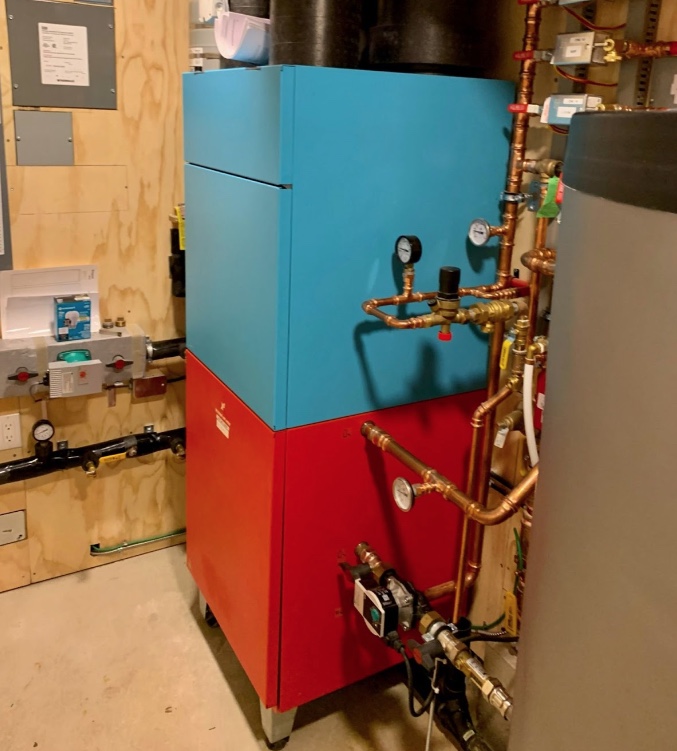
ZEBx’s NearZero Emissions Building Program
In 2018, the NearZero Emissions Building program was launched by the City of Vancouver. In 2019, the Province, through the CleanBC Building Innovation Fund program, provided additional funding to the program. This research and incentive program for near-zero emissions homes, now fully subscribed, targeted homes in Metro Vancouver.
What allows a home to produce near-zero operational emissions? You guessed it… a low-carbon energy system.
The NearZero program’s eligibility criteria required that the home use a LCES for space heating and that the home also meet a very high energy efficiency standard (Step 4 or 5 of the ESC or the Passive House standard). The compensation formula was structured to incentivize the use of heat pumps for generating hot water as well. As a result, this program collected a wealth of information on how the participants were able to achieve near-zero emissions performance targets by using LCESs.
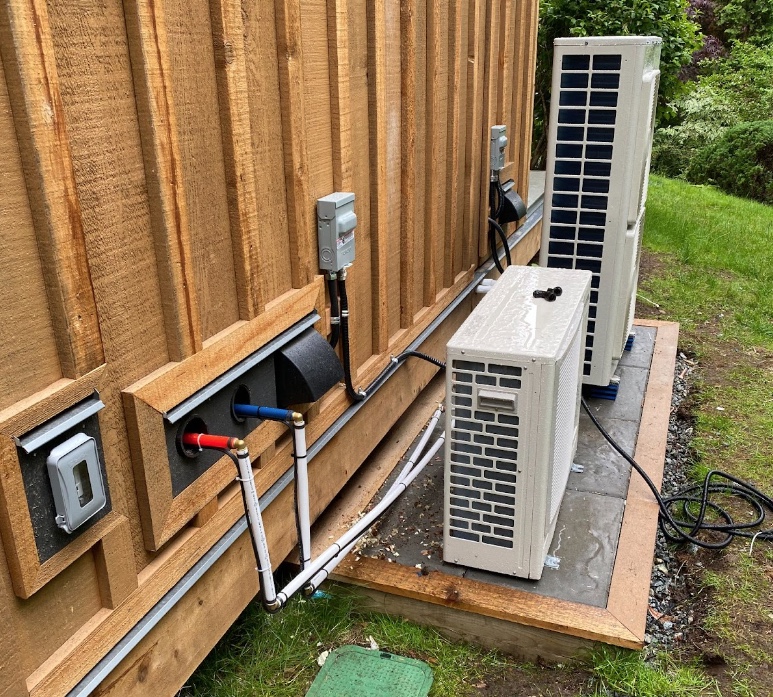
Below is a table that provides valuable insight into the decisions that were made by the homeowner and project teams. This is not a comprehensive list of all the projects in the program. At the time of writing this, a number of projects had not decided on which heat pump or which mechanical design to use for the home.
Heating and Cooling Systems for Homes
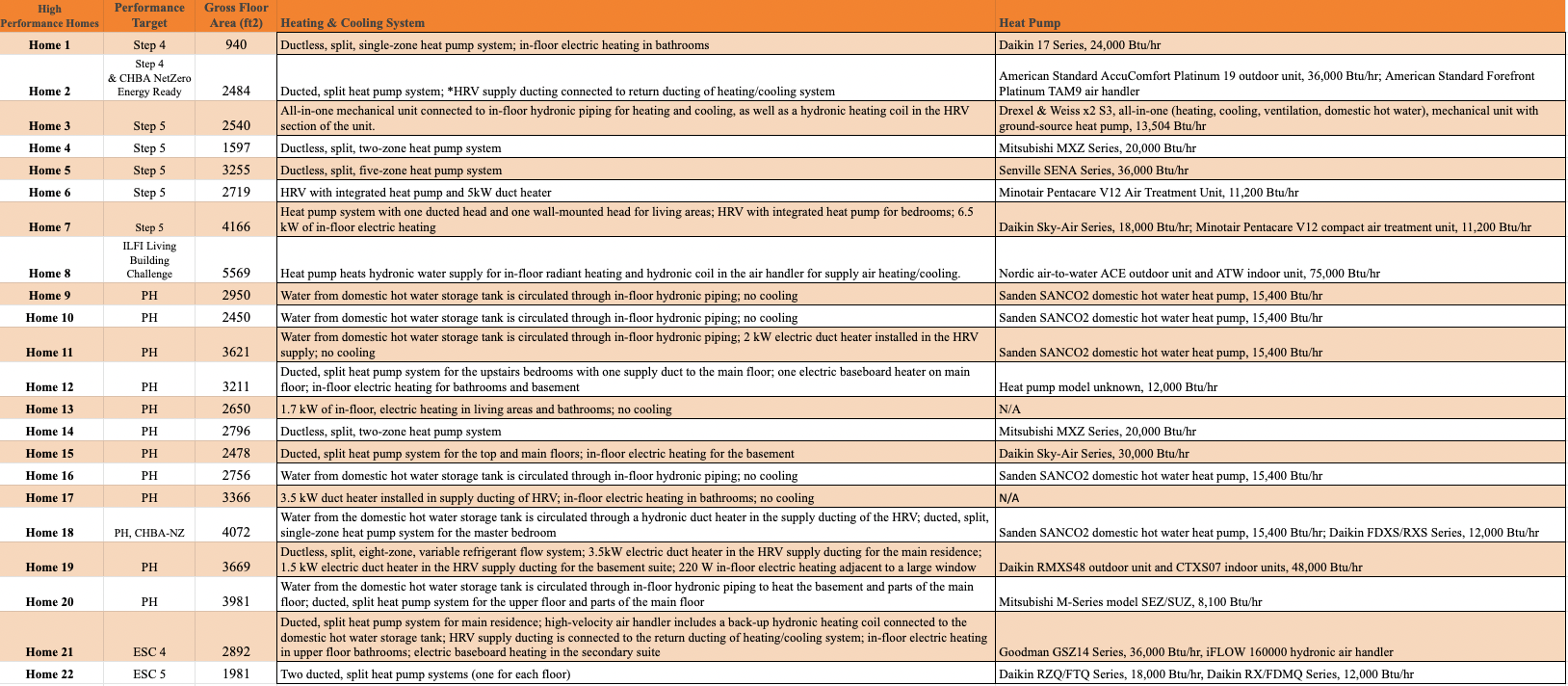
Of the 22 homes, 13 are all-electric (not connected to a gas supply) and only six do not include active cooling. The most common strategy chosen for heating was a heat pump and as a result, these homes also have active cooling for the warmer months of the year. The heat pumps range in capacity from less than 1 T (refrigeration tons) to just over 6 T. The high-capacity heat pumps are either multi-purpose heat pumps (space heating and cooling as well as domestic hot water) or heat pumps that serve more than four indoor fan coil units. No homes in the program have cooling-only systems.
Nine of the projects include a heating system that is interconnected with the ventilation system. In highly energy-efficient buildings, very little heating and cooling is required to maintain the indoor temperature within a comfortable range most of the year. As a result, it is possible to use the ventilation system to maintain thermal comfort despite the low airflow rate of a ventilation system.
“After assessing approximately 1,000 homes in our database, it’s clear that for a typical home, a low-carbon heating system with a good heat pump results in lower heating costs compared to using a high-efficiency gas-fired furnace. “
Mark Bernhardt, B.Sc. REA CPHC, President of Bernhardt Contracting
A Modern Way to Generate Hot Water
Burning gas to generate hot water contributes significantly to a household’s carbon footprint. To avoid this, several LCESs are available for homeowners. For the projects listed above, about 85% used modern heat pump technology for domestic hot water. The Sanden SANCO2™ heat pump water heater was the most common selection for this type of system. The Sanden system consists of a heat pump outside the home and a storage tank inside the home. Two other heat pump brands were used for two homes. One project used a Drexel & Weiss x2 S all-in-one unit (ventilation, heating, cooling, domestic hot water) and another used a Nordic ATW air-to-water heat pump (heating, cooling, domestic hot water).
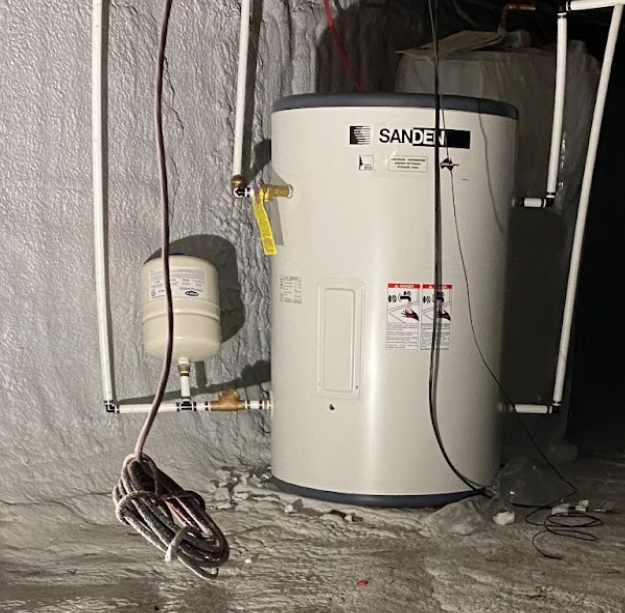
Three of the projects used hybrid electric water heaters manufactured by Rheem and GE Appliances. Hybrid water heaters combine a heat pump with a traditional electric hot water tank. Although not as energy-efficient as a heat pump water heater, the supply and installation cost is significantly less and the overall space required is also less. A hybrid heater is a packaged system that is slightly taller than a traditional electric hot water tank. When selecting a hybrid heater, it is important to note that unless the hybrid heater is ducted to the outdoors, it will cool the space in which it is located because it draws thermal energy from the air around it.
The lowest (upfront) cost option is the traditional electric water tank, but it has the highest operational cost. For an in-depth cost comparison of gas-fired water heaters, traditional hot water tanks, and heat pump water heaters, check out this B2E article.
The NearZero program has clearly demonstrated that LCESs can be a practical, affordable, and highly effective strategy for deep, real, and near-term operational emissions reductions for new homes. Although the low-carbon solutions available to the projects included in this trends analysis were somewhat limited, the increase in consumer demand for LCESs has resulted in a greater variety of product choices for homeowners. It has also resulted in more designers and contractors with the necessary experience. For these reasons, LCESs should be the default systems for space heating and hot water for new homes throughout BC.
Author: Roberto Pecora, Director, ZEBx.
